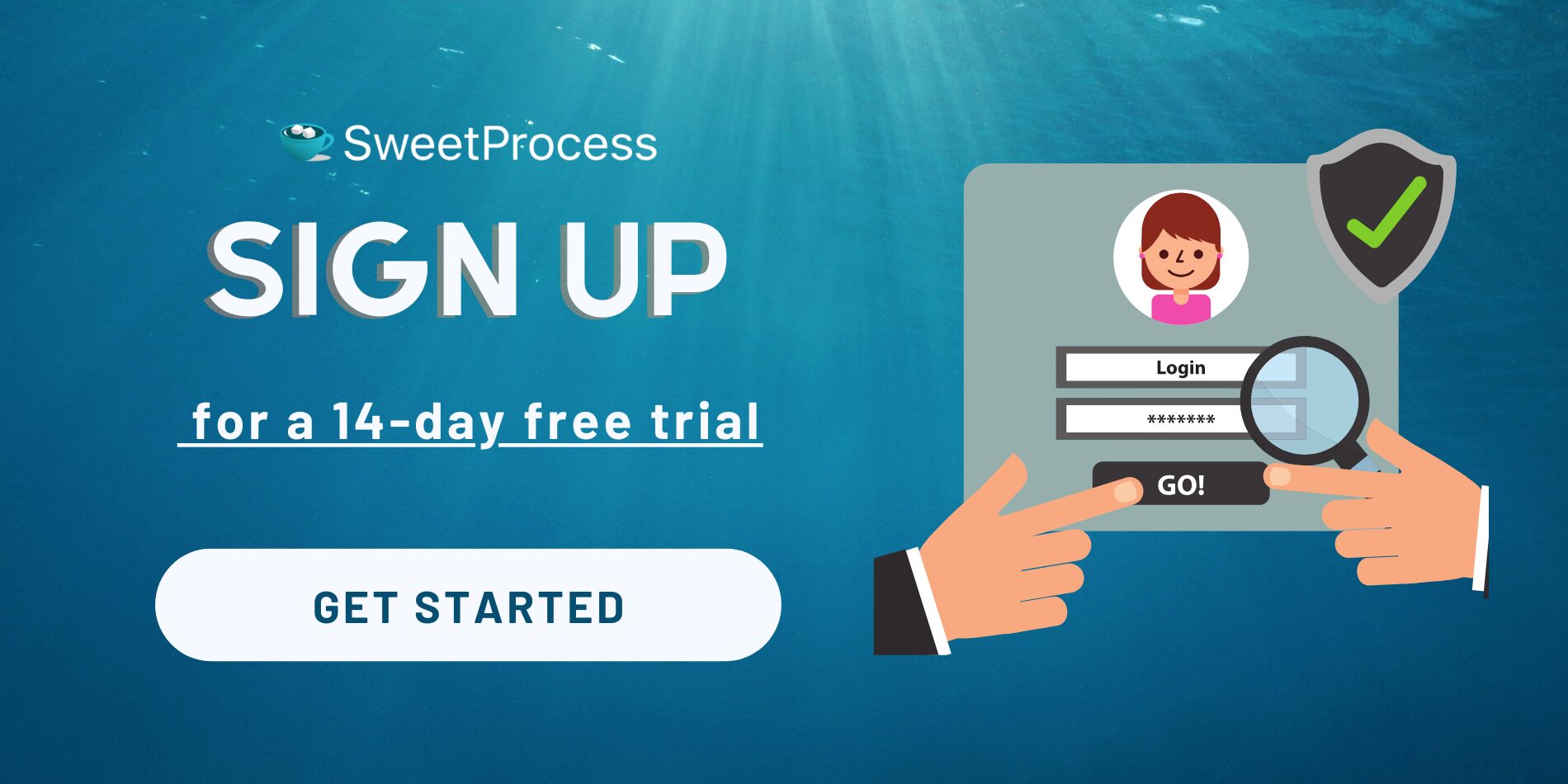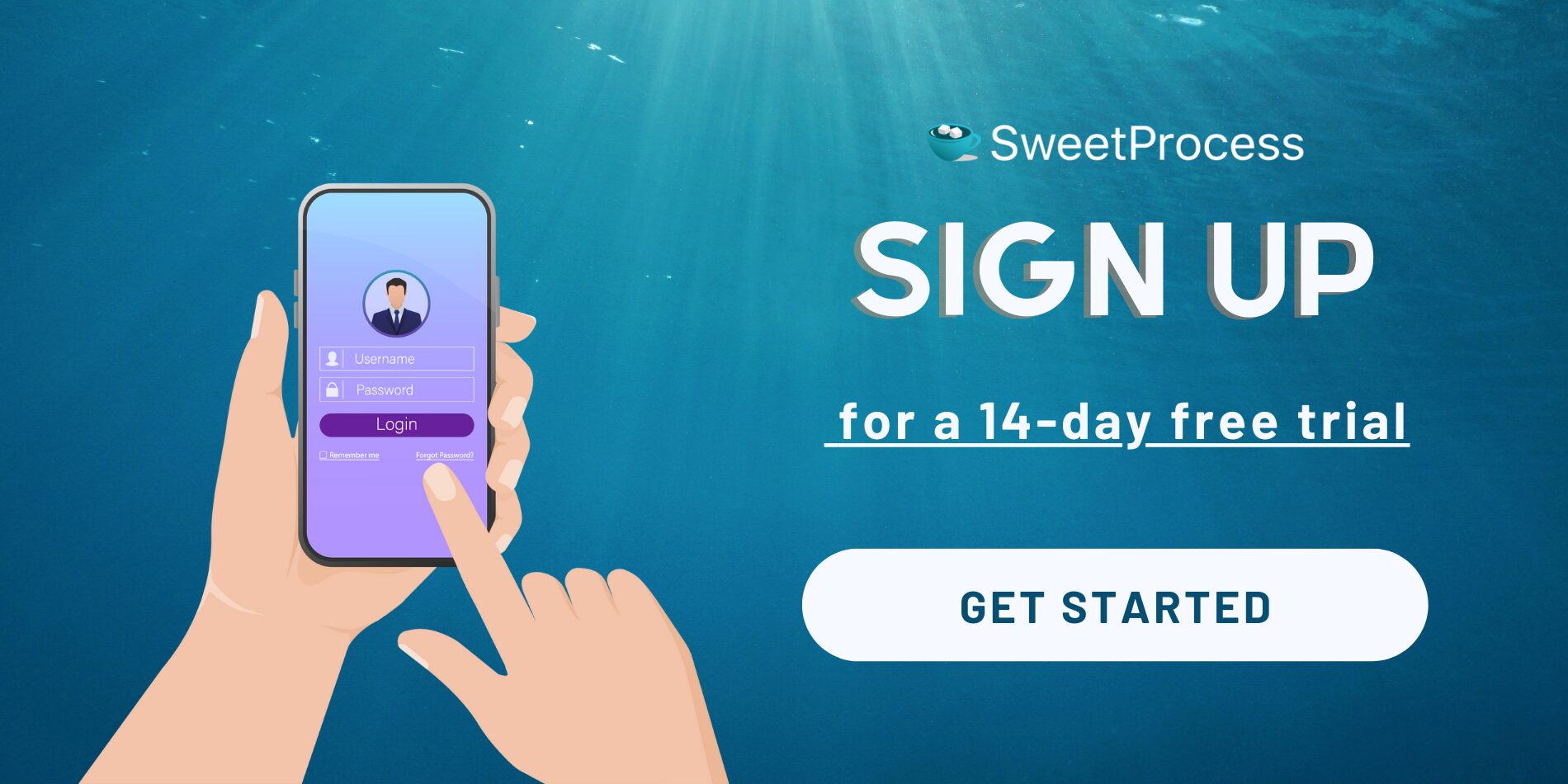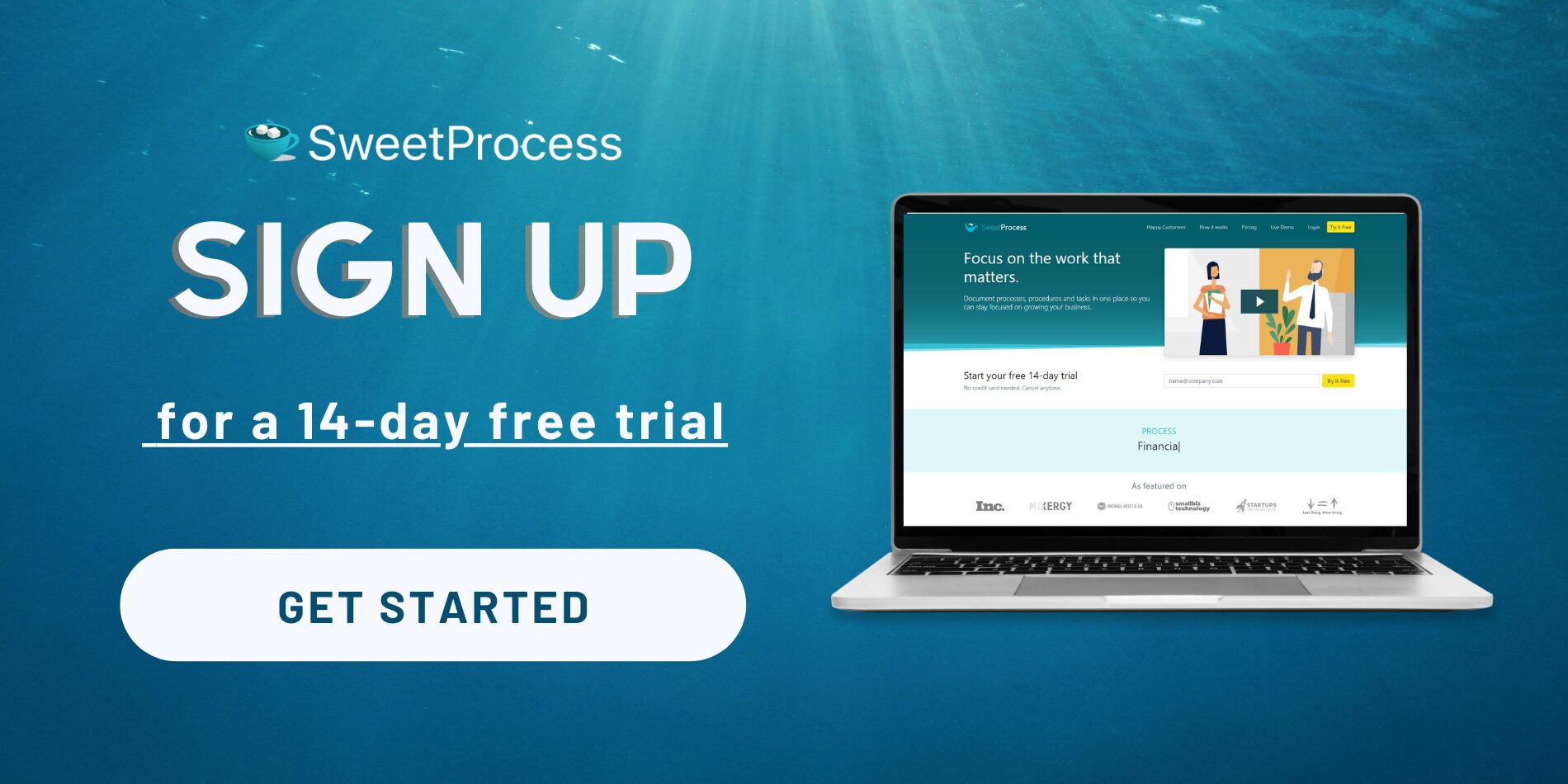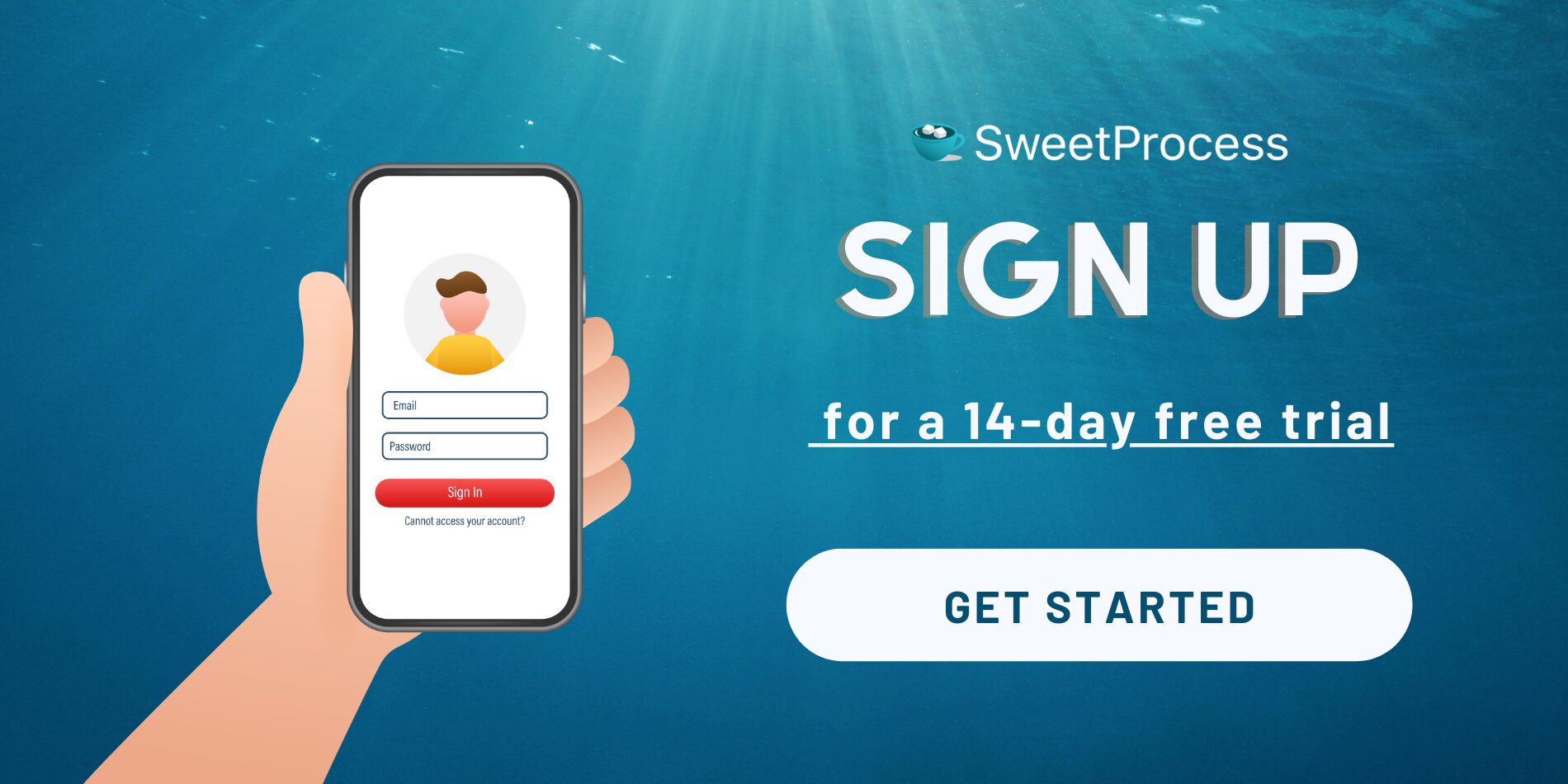Last Updated on March 26, 2025 by Owen McGab Enaohwo
![How To Create an Effective Step-by-Step Guide [Actionable Tips + Examples]](https://www.sweetprocess.com/wp-content/uploads/2025/03/step-by-step-guide.jpg)
Imagine you’re trying to assemble a set of flat-pack furniture without a step-by-step user guide — frustrating, right?
Now apply that to your company processes, employee onboarding, or customer support.
Without well-documented step-by-step guides, your team members and clients will get confused, leading to costly mistakes and inefficiency in the day-to-day operations.
A well-crafted step-by-step guide makes it easy for new employees or users to quickly get up to speed with minimal supervision. It removes ambiguity, streamlines operations, and empowers users to complete tasks confidently.
A structured guide can make all the difference in documenting a workflow for your team or providing troubleshooting instructions for customers.
Want a simplified process for creating and managing your step-by-step guides? Try SweetProcess for free today!
What You’ll Learn in This Guide
How To Create an Actionable Step-by-Step Guide in 9 Steps
Use Cases of Step-by-Step Guides in an Organization
Why You Should Create Helpful Step-By-Step Guides For Your Business
Key Components of a Step-by-Step Guide
How To Create and Manage Your Step-by-Step Guides With SweetProcess
Best Practices for Creating a Step-by-Step Guide
Step-by-Step Guide Examples You Can Learn From
Create and Manage Your Step-by-Step Guides in One Place
What Is a Step-by-Step Guide?
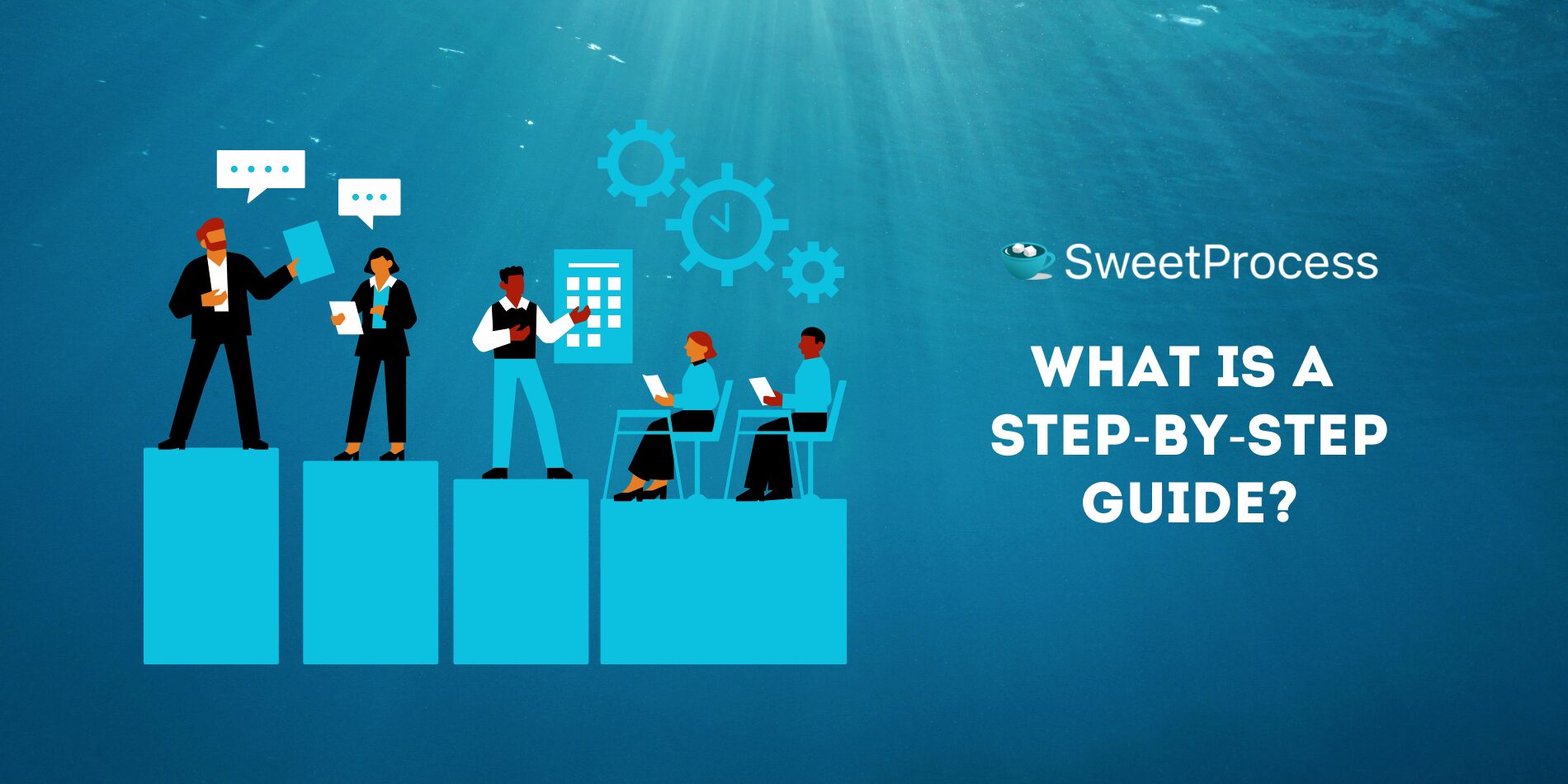
A step-by-step guide is a structured document that breaks down a process into sequential, easy-to-follow instructions. It serves as a roadmap, helping users understand and complete tasks with clarity and precision.
A step-by-step guide can help employees, customers, or stakeholders eliminate confusion, enhance efficiency, and improve knowledge retention.
How To Create an Actionable Step-by-Step Guide in 9 Steps

If you want to create a step-by-step guide that helps users execute specified tasks successfully, follow these simple steps:
Step 1: Define the Objective
Before writing a step-by-step guide, you should remember the end goal. Ask yourself:
- What problem does this guide solve?
- Who is the target audience?
- What outcome should the user achieve?
According to David Kemmerer, the co-founder and CEO of CoinLedger, it’s important to give an overview that allows your audience to have their own success metrics.
Identifying where the guide should lead them will make it easier to follow every step clearly and intentionally, leading to the desired outcome.
Step 2: Identify the Audience
Understanding your audience is crucial to tailoring the guide’s language, complexity, and format. For example, a step-by-step guide meant for employees will be written in a different language than the one meant for customers.
If you’re writing for customers, your guide should be simple, user-friendly, and engaging, while employee guides require formal and structured work instructions.
Your audience will most likely include both technical and nontechnical users. Therefore, use a mix of text, images, and videos.
Step 3: Gather Detailed Information
Research and document every step required to complete the task. If possible, involve subject matter experts (SMEs) to ensure accuracy.
As Sandy Meier, head of Marketing at Contentellect, shared, a good way to document a step-by-step guide is to do so while you’re actually doing the task.
He said, “Document the process while you’re actually performing it. I find this helps a lot because you discover those important little steps as you go that you might have overlooked when you’re writing from your memory alone.”
Step 4: Outline the Steps
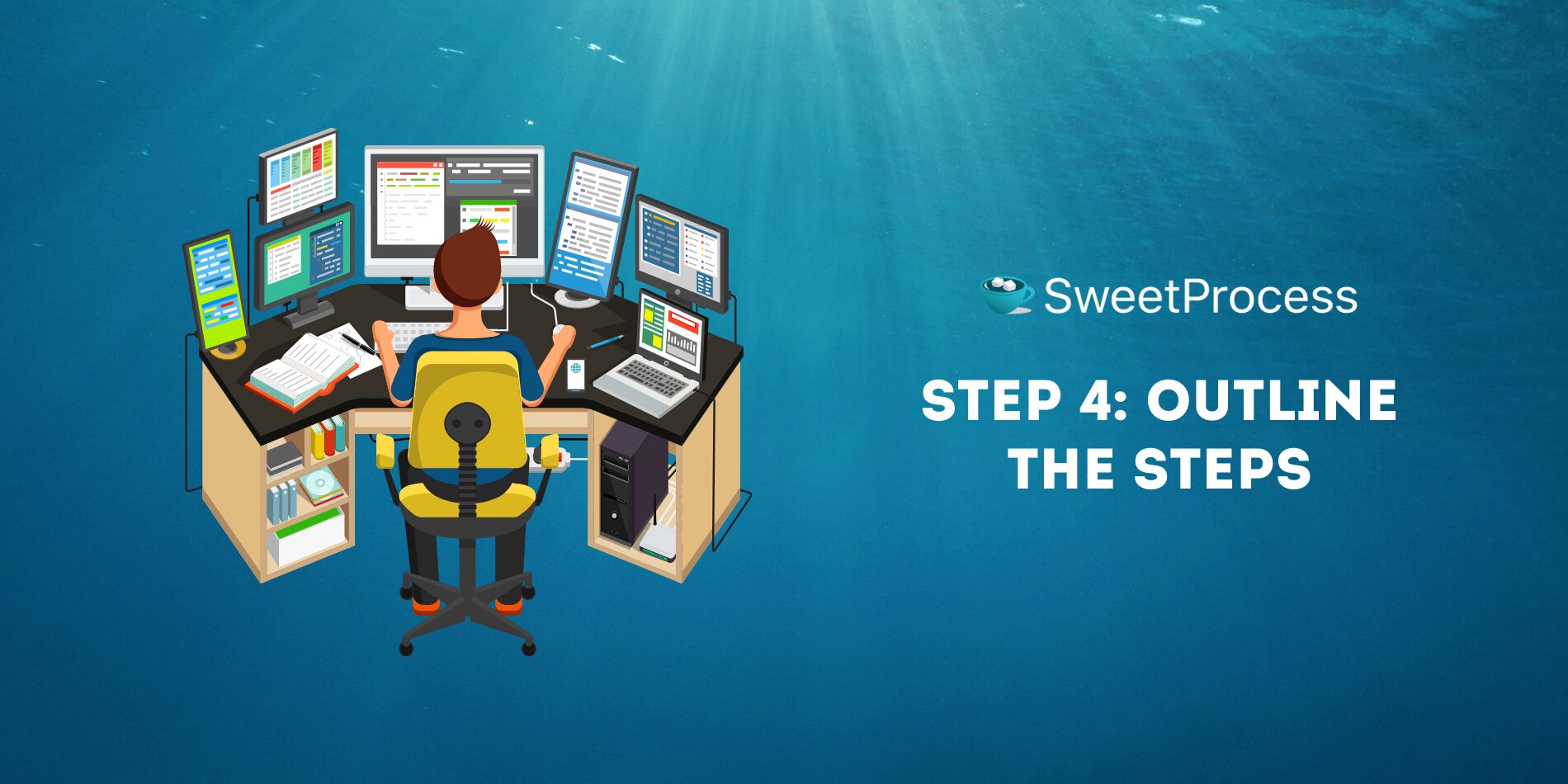
Your steps should be structured logically, ensuring each step is connected to the previous one. You can use numbered lists, bulleted lists, or even checklists. This will make complex processes easy to follow.
Example: Instead of writing long paragraphs ❌, break down the process✅ like this:
Step 1: Open the software.
Step 2: Click on “Settings.”
Step 3: Select “Preferences” from the drop-down.
Step 5: Write Clear Instructions
Always create instructions that are easy to follow. Use simple, action-oriented language to guide users effortlessly. Keep sentences short and direct for better clarity.
Example:
- ✅ Do: Click the “Submit” button to save your changes.
- ❌ Don’t: You might want to consider clicking the button labeled “Submit” so that you can save the changes that you just made.
According to Seth Geftic, Product Marketing VP at Huntress, if you want your guide to be helpful for both experienced and inexperienced users, you should assume zero prior knowledge while writing the guide. That is, write for the least experienced user who has never done this.
That means skipping jargon, avoiding assumptions, and making every step crystal clear. At the same time, don’t be condescending but rather offer additional resources to learn more if needed.
Step 6: Send the Guide for Review
Before making the guide available to users, always have a team member review it for clarity and completeness. If you are a SweetProcess user, you can run the guide through an internal team. With the collaboration feature in SweetProcess, the team members can comment on it, and the review will be done without hassle.
Become a SweetProcess user to collaborate and review your step-by-step guide. It’s free.
Step 7: Test the Guide
Now that the guide is ready, it’s time to test its usability. Run through the guide as if you were a first-time user. Identify missing details, confusing steps, or areas that need additional clarification.
For a thorough test, you can have potential users or a test group go through it to ascertain its clarity and report any difficulties.
Step 8: Publish and Distribute via the Right Channel
Choose the best platform for sharing your guide. Depending on the type of guide and who it is meant to serve, you may need to use documentation tools or a knowledge base tool.
Tools like SweetProcess have process documentation features that help create visually interactive internal team guides. They also have a knowledge base feature for customer-facing guides.
Companies using SweetProcess, like Next7 IT, can store internal and external guides in one place, making them easily accessible to employees and customers.
Step 9: Gather Feedback and Update Regularly
A step-by-step guide should not remain static but evolve with process changes, tools, or customer needs. Regularly collect feedback and update the guides accordingly.
SweetProcess allows you to set a particular frequency for your process review. This can be annually, monthly, or anytime you deem fit.
If your step-by-step guide is meant for public consumption, Craig Murphy, the managing director at ALT Agency, recommends checking Google’s search console to see what search terms are being used to find your article. This can give you new ideas for content gaps needed to update your step-by-step guide.
Use Cases of Step-by-Step Guides in an Organization
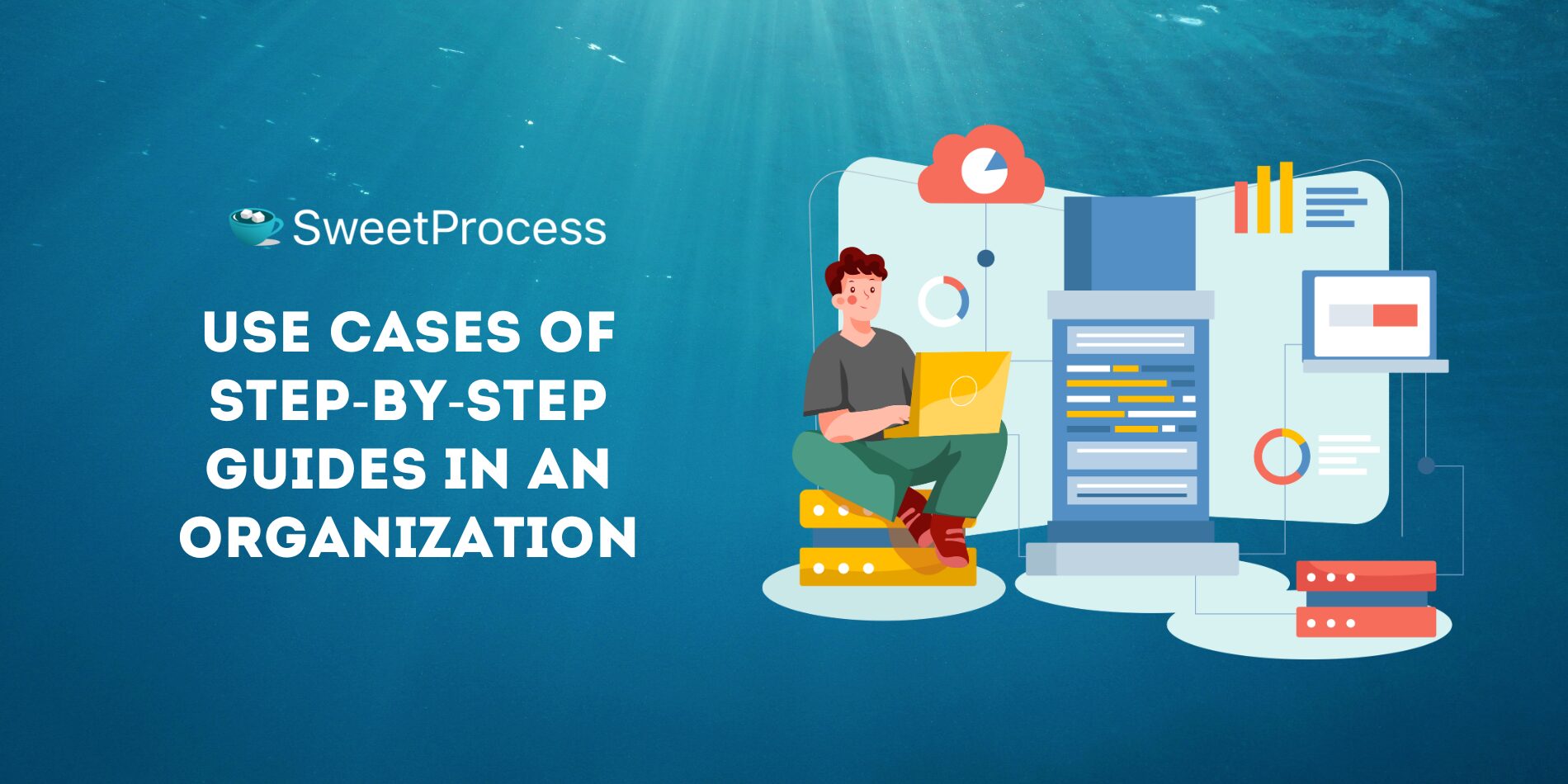
Step-by-step guides are indispensable for streamlining various business processes. They ensure that employees, customers, and stakeholders follow standardized procedures. This reduces errors and improves efficiency. Some major use cases are discussed below:
1. Standard Operating Procedures (SOPs)
SOPs document routine business processes and ensure consistency across teams. Whether handling customer inquiries or performing quality control checks, SOPs provide clear instructions to maintain efficiency.
For example, a manufacturing company uses an SOP as a step-by-step guide to standardize equipment maintenance, thus reducing downtime and improving safety compliance.
Forensic Analytical Consulting Services is one of the companies using SweetProcess for their SOP documentation. The SOPs outline their entire processes, making onboarding their new and existing employees easy.
2. Customer Onboarding Guide
A structured customer onboarding guide helps new customers understand how to use a product or service, ensuring a smooth customer experience.
For example, a Software as a Service (SaaS) company will provide a step-by-step onboarding guide for new users, covering account setup, key features, and troubleshooting tips.
3. Employee Onboarding Guide
New hires often struggle with understanding company workflows. A well-documented onboarding guide helps them integrate quickly, reducing the need for constant supervision.
4. Customer Self-Service Guide
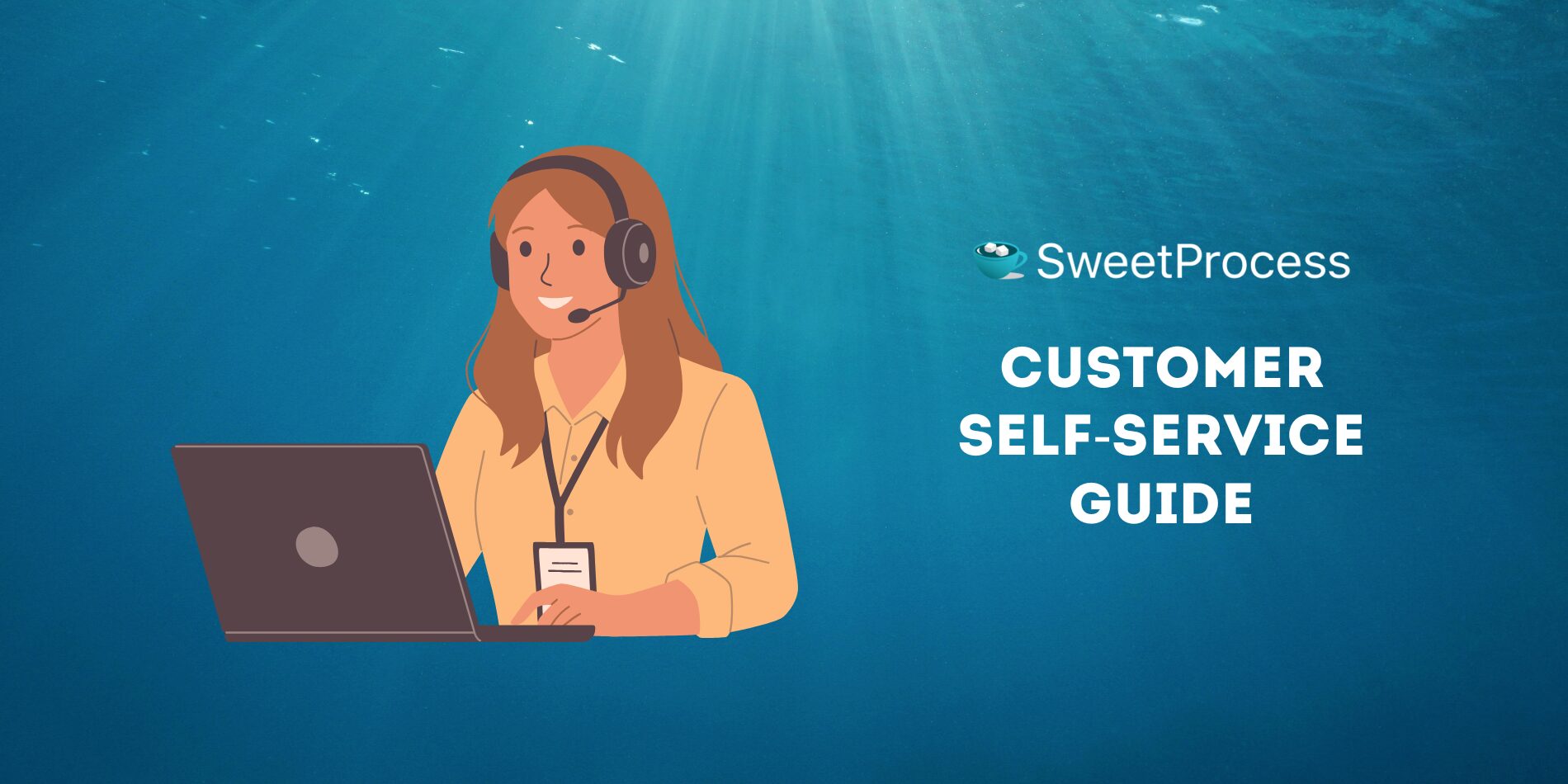
Most customers will try to solve issues themselves before reaching out for support. An explicit self-service guide will help most customers in solving their problems. This will reduce the influx of tickets coming in to support, leading to a low running cost for the support team.
An example is Thomson Reuters’ self-service guide for legal users. The guide covers everything a user needs to know while interacting with their portal from payment to invoicing, disputes, etc.
5. Troubleshooting Guides
Troubleshooting guides are indispensable for internal teams and customers to resolve technical issues. Troubleshooting guides help users resolve technical issues efficiently by providing step-by-step solutions to common problems.
An example is HP’s troubleshooting guide, which addresses everything from computer diagnostics to post-error messages and password security.
6. Software Installation Guides
Software step-by-step installation guides ensure that users can set up software correctly without requiring technical assistance.
An example is Toshiba’s software installation guide, which covers installation and uninstallation procedures.
SweetProcess simplifies guide creation by offering collaboration tools, workflow automation, and easy updates.
Why You Should Create Helpful Step-By-Step Guides For Your Business
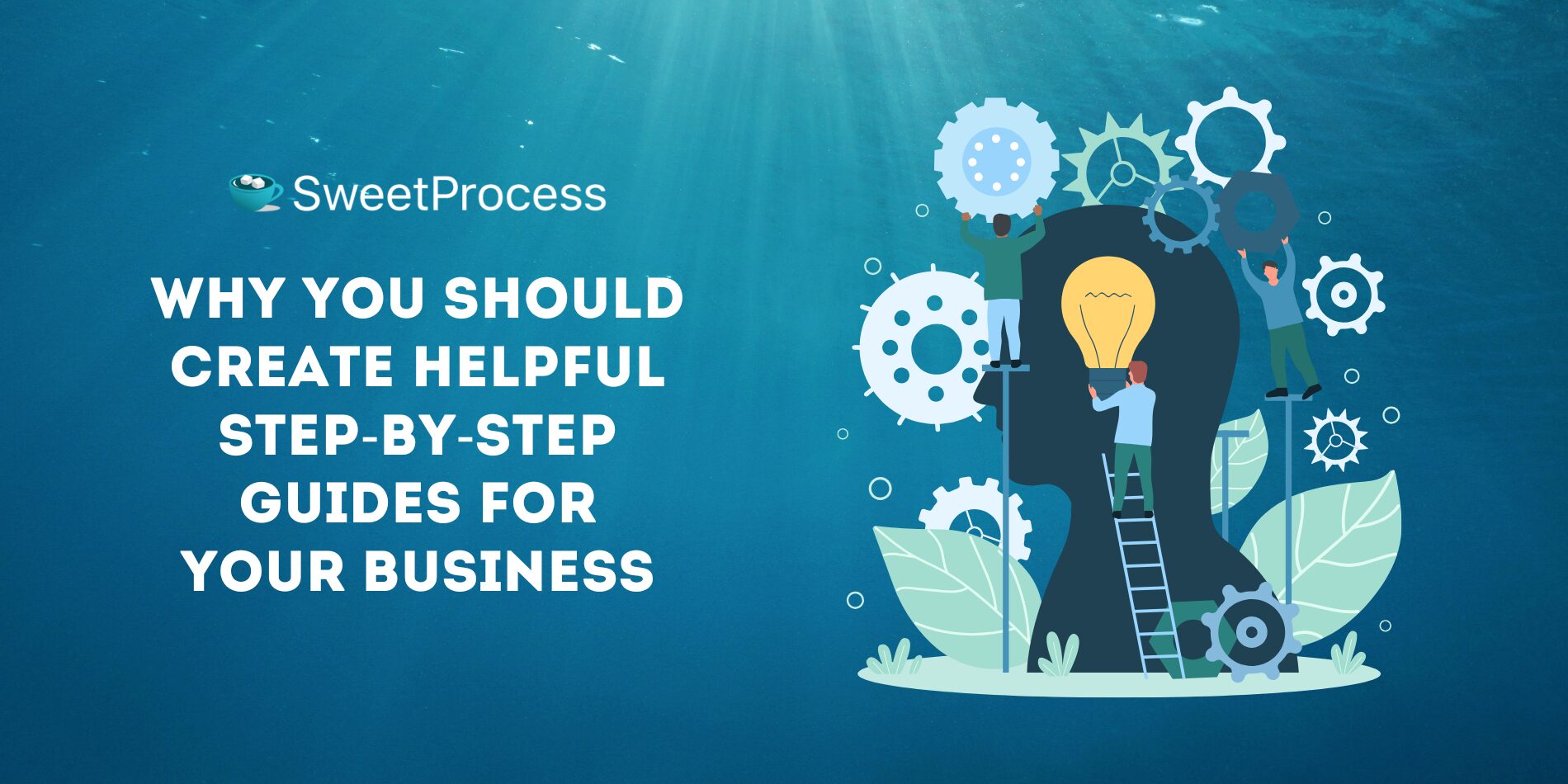
Creating detailed and well-structured step-by-step guides isn’t just about documentation—it’s about improving efficiency, reducing errors, and enhancing the overall experience for employees and customers. Here’s why investing in high-quality guides is essential for your business:
1. Clear and Concise Instructions Reduce Confusion
Without clear instructions, employees and customers struggle to complete tasks, leading to frustration and inefficiencies. A well-written guide ensures that every step is easy to follow.
2. Improves Work Quality by Preventing Manual Errors
When employees follow inconsistent procedures, errors are inevitable. Standardized step-by-step guides ensure every task is performed correctly, thus reducing mistakes and improving overall work quality.
3. Aids Collaboration and Transfer of Company Knowledge
Business knowledge should not be limited to a few employees to avoid tribal knowledge. Step-by-step guides help document processes so teams can collaborate effectively and pass company knowledge management to new employees.
4. Improves Productivity Through Faster Resolution Time
Without proper guides, employees will waste valuable time searching for answers or figuring out how to complete tasks. A structured guide provides instant solutions, enabling teams to work more efficiently.
SweetProcess comes with features like real-time collaboration, version control, and embedded multimedia, thus making step-by-step documentation effortless. If you want to improve efficiency and reduce errors in your business, you can start your free trial of SweetProcess today!
Key Components of a Step-by-Step Guide
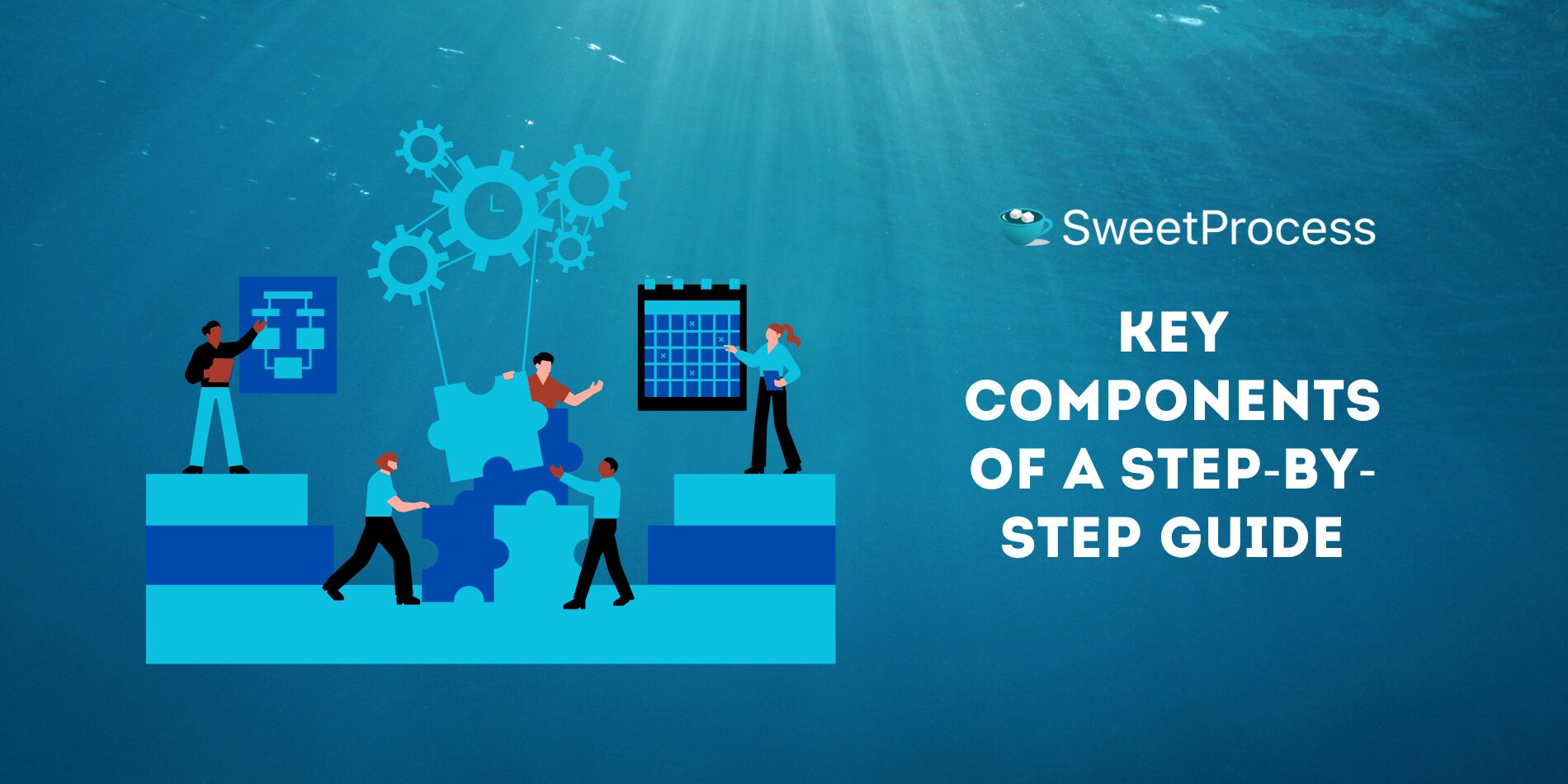
A great step-by-step guide follows a clear structure to ensure users can understand and apply the instructions easily. Here are the key components every guide should include:
1. Name of the Task
Clearly define what the guide is about so users know its purpose right away. The title should be straightforward and descriptive.
Example: How to Set Up a New Employee Email Account in Google Workspace
2. Number of Steps
Provide a clear breakdown of the steps involved to give the users an overview. If the process is lengthy, consider breaking it into actionable sections for better comprehension.
3. Explanation of What Happens in Each Step
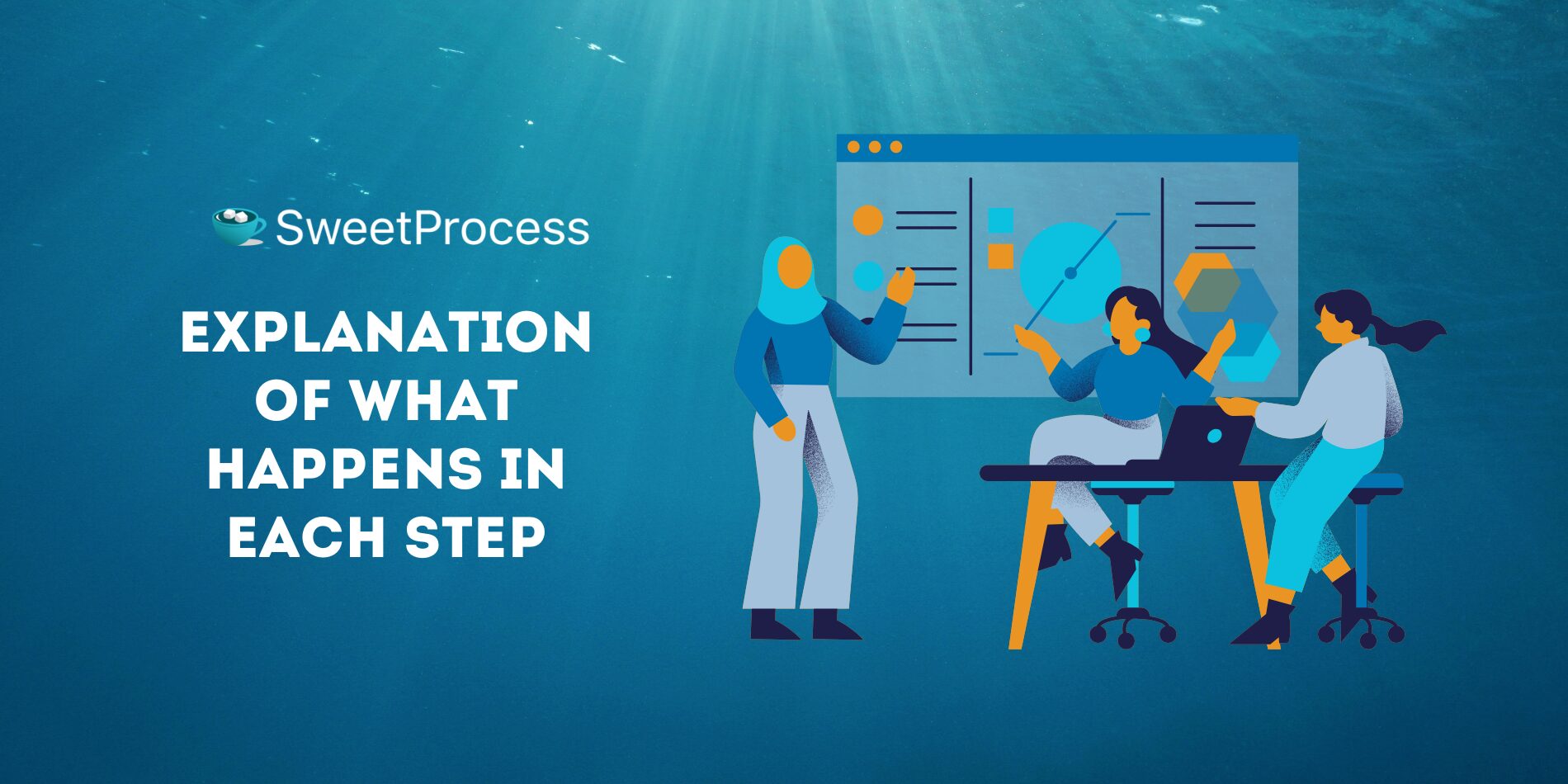
Each step should include:
- An explicit instruction on what to do.
- Additional context or reasoning where needed.
- Visual aids such as images, screenshots, or videos for better understanding.
Example:
Step 3: Configure Email Settings
- Click on “Settings” in the top right corner.
- Under “Accounts,” select “Add a New Email.”
- Enter the employee’s details and click “Save.”
4. Expected Outcome
Each step or guide should specify the expected result once the process is completed.
Example: Once all steps are completed, the new employee should be able to access their company email with their username and password.
With SweetProcess, your company can create well-organized guides with multimedia elements, collaboration tools, and easy accessibility. If you don’t want to start from scratch, you can create a detailed step-by-step guide using SweetAI with a simple prompt.
How To Create and Manage Your Step-by-Step Guides With SweetProcess

SweetProcess is an all-in-one process documentation tool designed to help businesses create, manage, and improve their step-by-step guides efficiently. SweetProcess offers a lot of supporting features for your step-by-step guides, some of which are discussed below:
Turn Your Browser’s Activities into Procedures Using the SweetProcess Chrome Extension
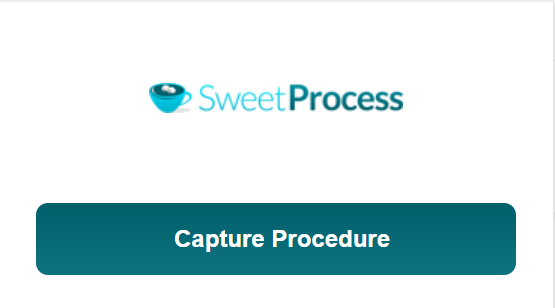
This feature is for you if you want to make a step-by-step guide from your on-screen activities. Without worrying about how to describe or write a procedure, you can use SweetProcess’s Chrome extension to document a step-by-step guide as you browse.
Once you hit “Capture Procedure,” every click, keystroke, and screenshot at each critical juncture are captured in real-time, creating an immersive, visual story of your activity.
These recordings are visually enriched, dynamic step-by-step guides that show exactly how each activity is performed.
Your recordings are saved in your SweetProcess account if you have one, or you will be prompted to create one for free.
Embed Images and Videos into Your Company’s Procedures
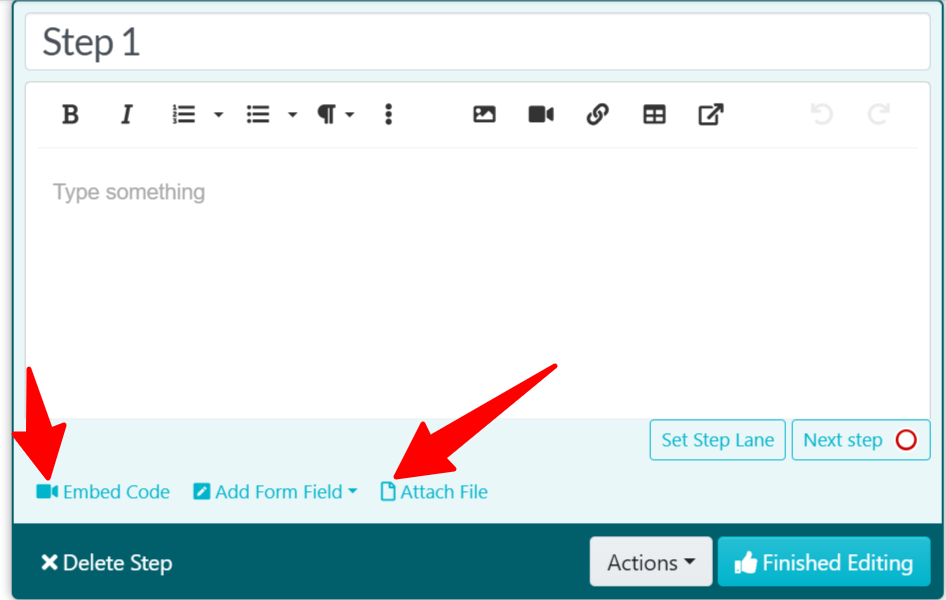
Text-based step instructions are helpful, but adding multimedia elements makes your step-by-step guides even more engaging and easier to follow. With SweetProcess, you can embed instructional images, videos, tables, and forms directly into your step-by-step interactive guides.
Turn Existing Procedures into an Internal Knowledge Base
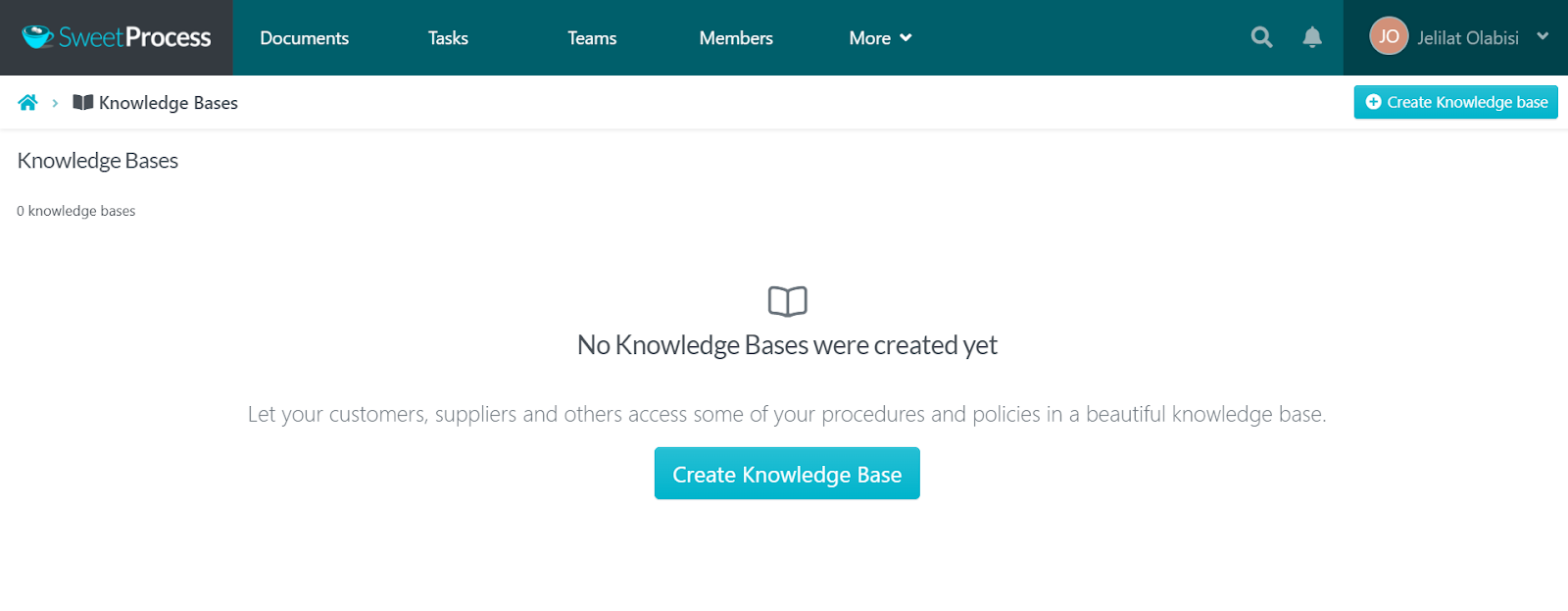
Your SweetProcess procedures can be converted to knowledge base articles. Step-by-step guides hosted in the internal knowledge bases can be accessible to all team members. SweetProcess also has an external knowledge base feature that makes it easy for customers and stakeholders to access your most recent guides.
Collaborate with Team Members on Your Company’s Procedures
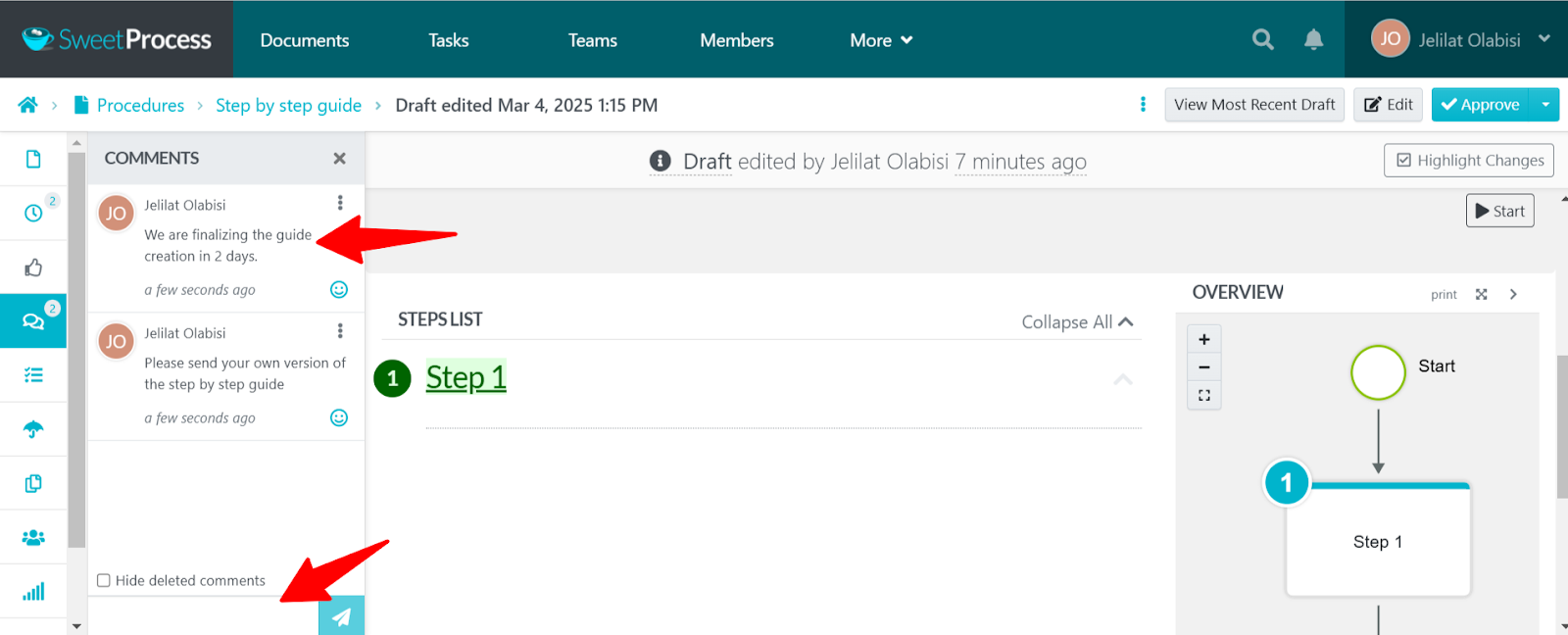
SweetProcess enables real-time collaboration, allowing multiple team members to seamlessly contribute, review, and update step-by-step guides. This makes it easy for any team member with permission to view, edit, and work with your step-by-step guides.
Case Studies of Productive Step-by-Step Guides:
1) MonteVista Homes

Running a real estate and construction business like MonteVista Homes comes with its fair share of operational headaches. With so many moving parts, keeping processes streamlined was a constant challenge.
For years, the team at MonteVista Homes had their SOPs created on loose-leaf documents and desk manuals for every position in the organization, but no one was using them. Indeed, onboarding a new employee at the time required several weeks of sitting over someone’s shoulder to show them how to handle company processes.
The game-changing moment was when Luke Pickerill, president of MonteVista Homes, adopted SweetProcess for the team. The team was able to document their business processes in the form of step-by-step guides.
According to Luke, “It’s actually been game-changing in almost every department, to be honest with you, but specifically sales have been huge. We all know the typical sales stereotype. Salespeople are sort of unorganized. That’s what makes some great salespeople. Being able to document in a step-by-step process and have that reference that they can go back to online, they don’t have to carry around a pamphlet.”
This SweetProcess intervention unified their operational processes and cut off their onboarding process and time.
2) Next7 IT

Don Houk, the president of Next7 IT, found SweetProcess while working on improving their business processes. The Microsoft Word system they had been using caused them many operational setbacks, as it could no longer meet their needs.
When they adopted it, the feature they found most interesting was the ability to create step-by-step checklists.
While expressing his satisfaction, Don Houk said, “The check listing underneath a single step is important—where you could have substeps underneath. Something you think is very simple, a substep under a step, that shouldn’t be a hard thing to do. But surprisingly, that wasn’t a feature that a lot of software had. The combination of those is what drew us to SweetProcess.”
The team repeats the same steps every time and achieves good results, regardless of whoever handles the task. With SweetProcess, the team now boasts efficient documentation, quality employee onboarding, and consistent service delivery.
3) Aizer Group

Aizer Group is another case study of a team that was able to optimize its business operations and find success with SweetProcess.
Before SweetProcess, Lisa Phillips, the Group General Manager, was the bottleneck of all company operations. Without Lisa answering lots of questions, virtually nothing got done. At one point, Lisa took a huge step by documenting all that she knew with pen and paper.
The breaking point at Aizer Group was when they were offshoring their team, and they discovered that all the manually written processes wouldn’t help.
Finding SweetProcess, Aizer Group was able to create go-to documents for their offshore team, and also mapped out their processes. Interestingly, Lisa found out that SweetProcess actually helps their employees follow a step-by-step process to execute their tasks, while checking off the processes as they progress.
Best Practices for Creating a Step-by-Step Guide
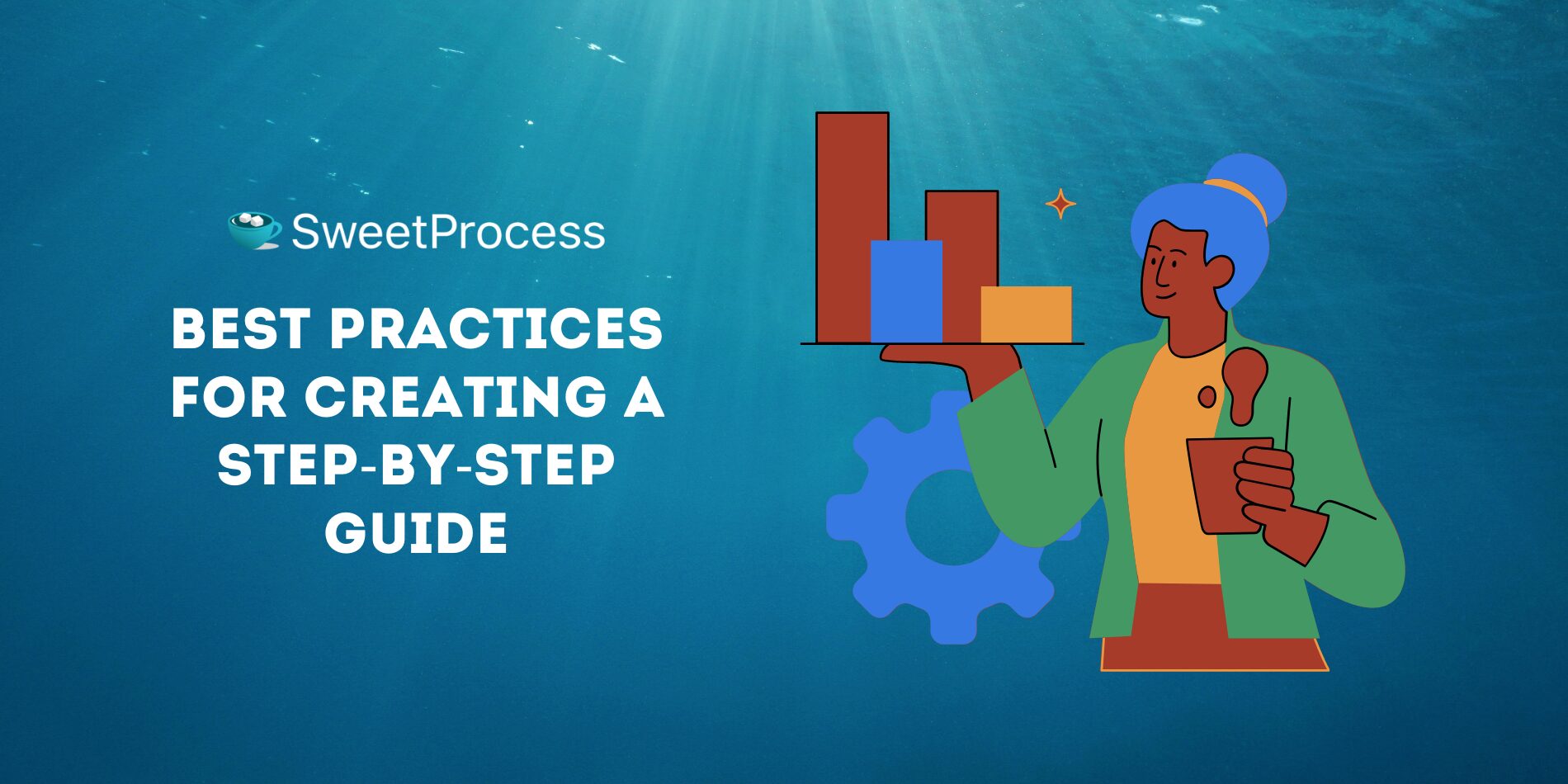
Creating a step-by-step guide is more than just listing instructions. It requires clarity, organization, and user-friendly formatting. Follow these best practices to ensure your guide is effective and engaging.
1. Choose the Right Tool
Using the right documentation tool can make the process seamless. Instead of relying on static Word documents or PDFs, SweetProcess allows you to document your step-by-step guide, put your written instructions in checklist format that can be checked off, and collaborate, provide updates, and integrate multimedia in real time.
2. Be Consistent in Tone and Style
Adopting a consistent tone is essential, as this helps maintain clarity and professionalism, depending on your audience. Use a formal tone for business procedures that concern employees and a conversational tone for customer support guides.
3. Organize Content in a Logical Order
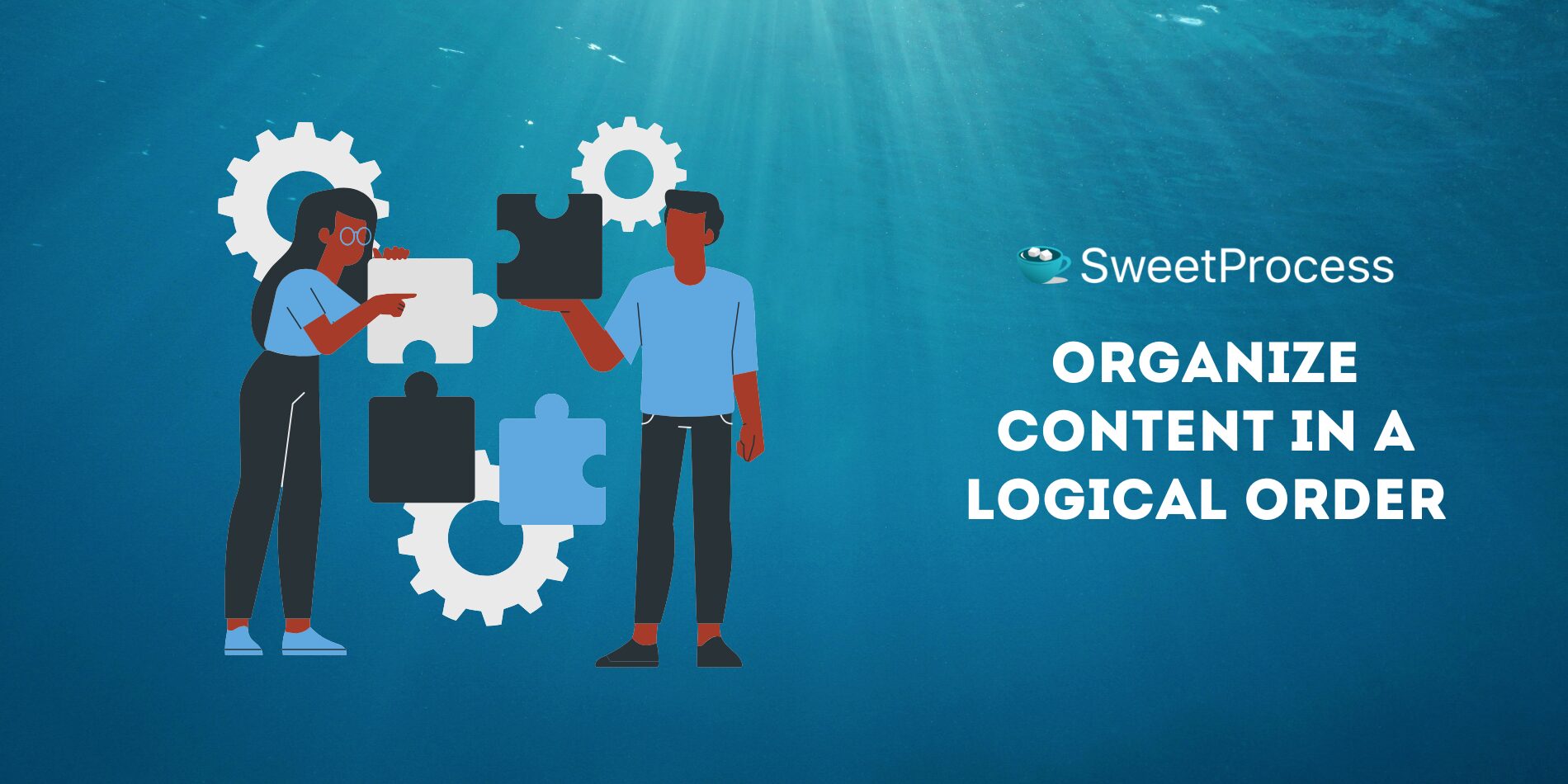
Your guide should follow a clear, logical sequence so users don’t get lost or confused. Always start with an introduction or objective. Break down multiple steps into manageable sections and arrange them in chronological order. You can also include a summary or troubleshooting tips in case of software installation guides.
4. Use Interactive Elements
Adding images, screenshots, videos, or GIFs can make your guide more engaging and easier to follow. You can find this feature in SweetProcess, which makes your guide more interactive and productive.
5. Update Frequently with Changes in Your Workflow
Processes evolve and so should your step-by-step guides. Schedule periodic reviews to ensure your documentation remains relevant and up to date.
SweetProcess enables you to edit your procedures with AI to make them less hectic. You can also easily create, manage, and update step-by-step guides, ensuring that employees and customers always have access to the latest procedures.
Want to create clear, hassle-free step-by-step guides? Sign up for a free SweetProcess account today!
Step-by-Step Guide Examples You Can Learn From
Looking at real-world examples of step-by-step guides can help you understand what makes an effective instructional document. Below are some standout examples from different industries you can learn from.
1. Getting Started Guide by Trello
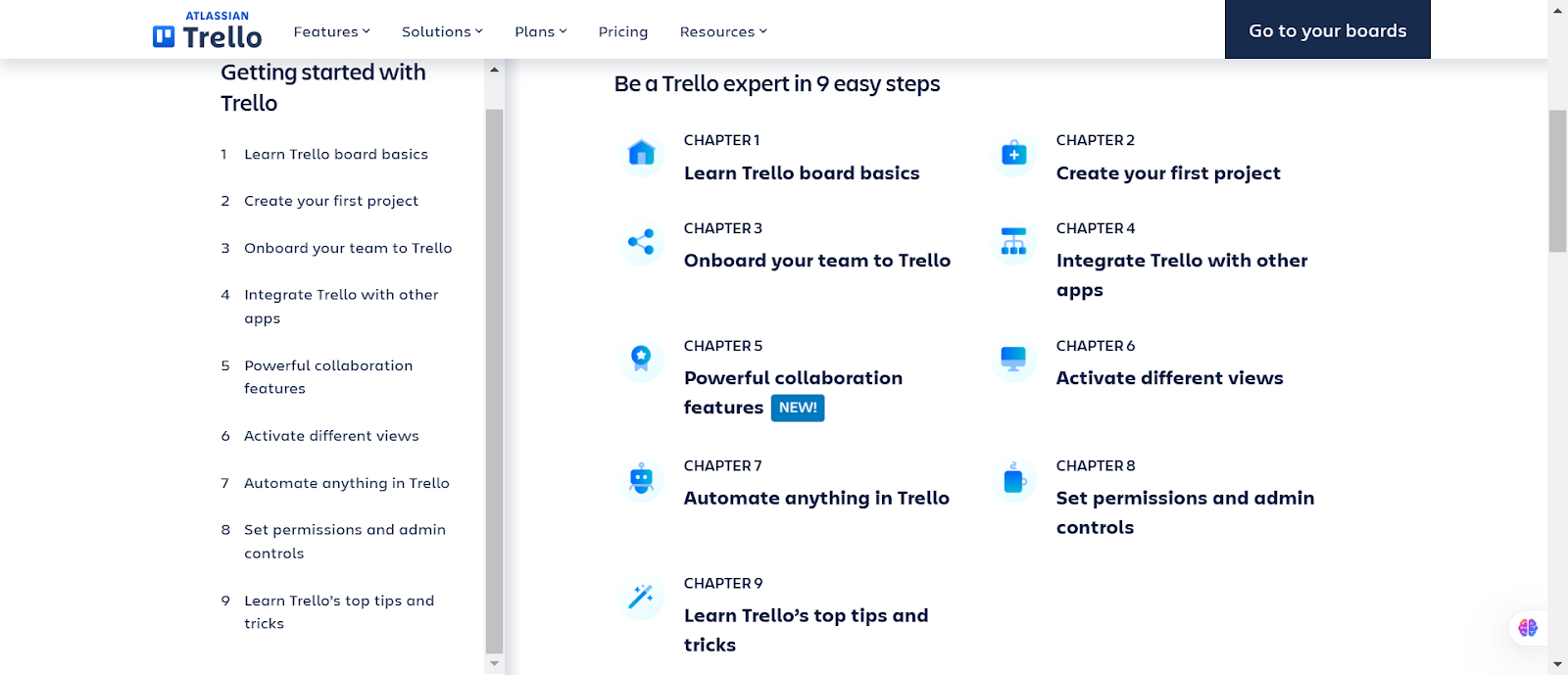
Trello’s “Getting Started” guide is meant to walk new users through everything they need to know about using Trello, from setting up their first project to equipping the team with all the tools they need to get the job done.
What makes it stand out?
- Uses symbols to make it interactive.
- Provides clear, concise written steps without overwhelming users.
- It includes a progressive onboarding approach that guides users from basic setup to advanced features.
Key takeaway: Use visuals and progressive multiple steps to ease users into complex steps.
2. Process Building Guide by Process Street
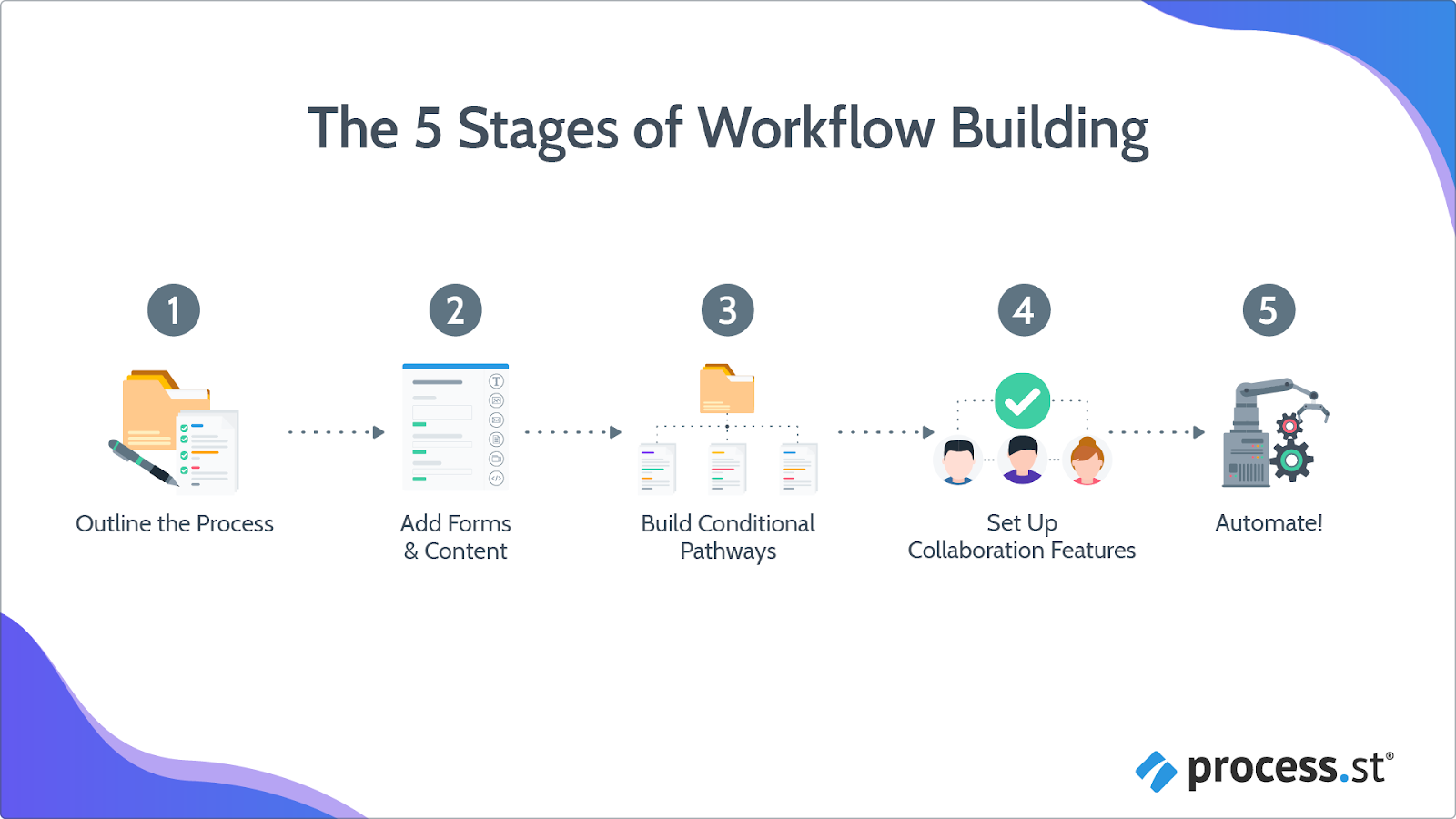
Process Street has a tried and tested comprehensive guide called “The 5 Stages of Workflow Building”, which helps users learn how to build out processes and workflows in the most effective way possible.
What makes it stand out?
- Focuses on structured workflow documentation to ensure consistency.
- Breaks down the process into small, actionable steps.
- Provides examples of different use cases for better understanding.
Key takeaway: Clearly define workflows with detailed, easy-to-follow steps.
3. Quick Start Setup Guide by Zoom
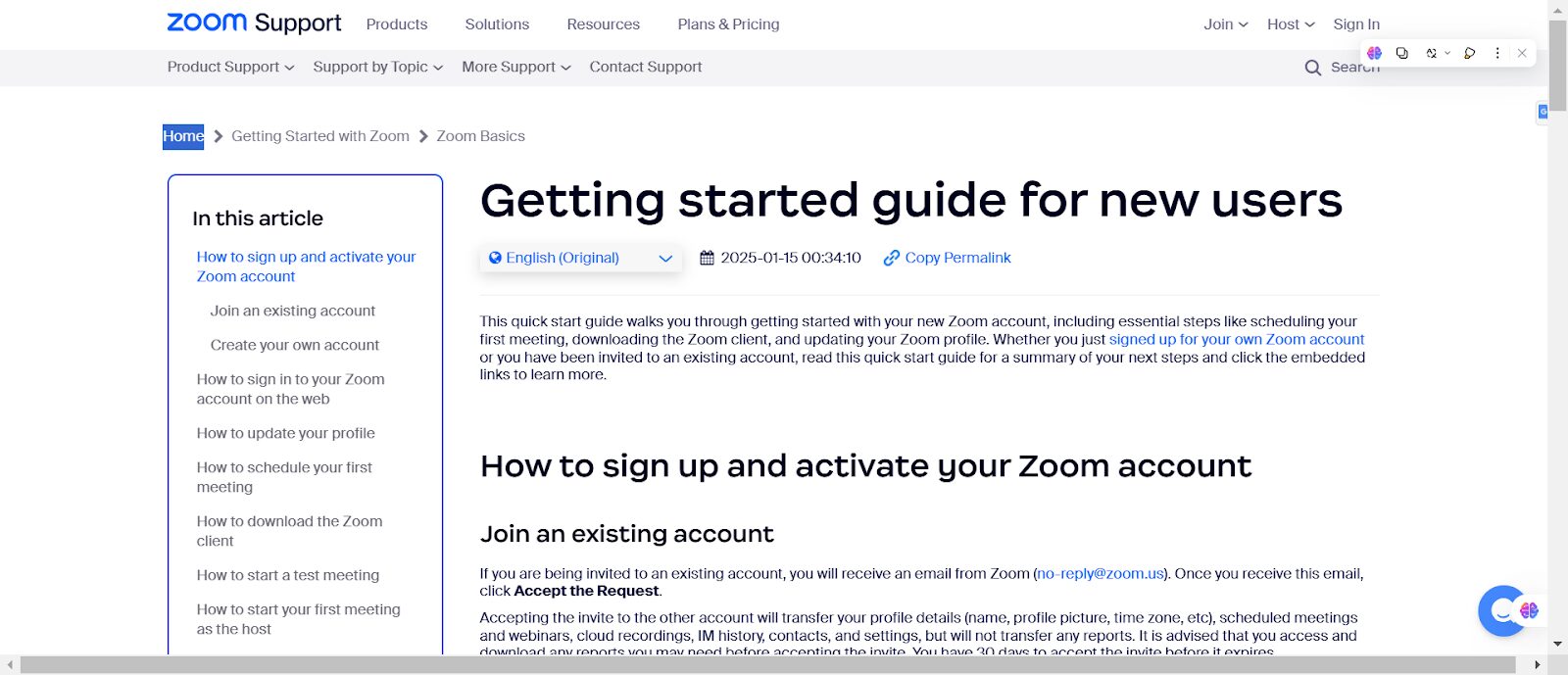
Zoom’s step-by-step starters’ guide walks you through the process of getting started with your new Zoom account. It also includes key steps like scheduling your first meeting, downloading the Zoom client, and updating your Zoom profile for new and existing users.
What makes it stand out?
- Uses step-by-step interactive screenshots to guide users through the setup process.
- Includes troubleshooting tips for common issues.
- Includes device compatibility checks before installation steps.
Key takeaway: Anticipate user problems and offer solutions within your guide.
4. Steps to Enlist in the US Army by Go Army
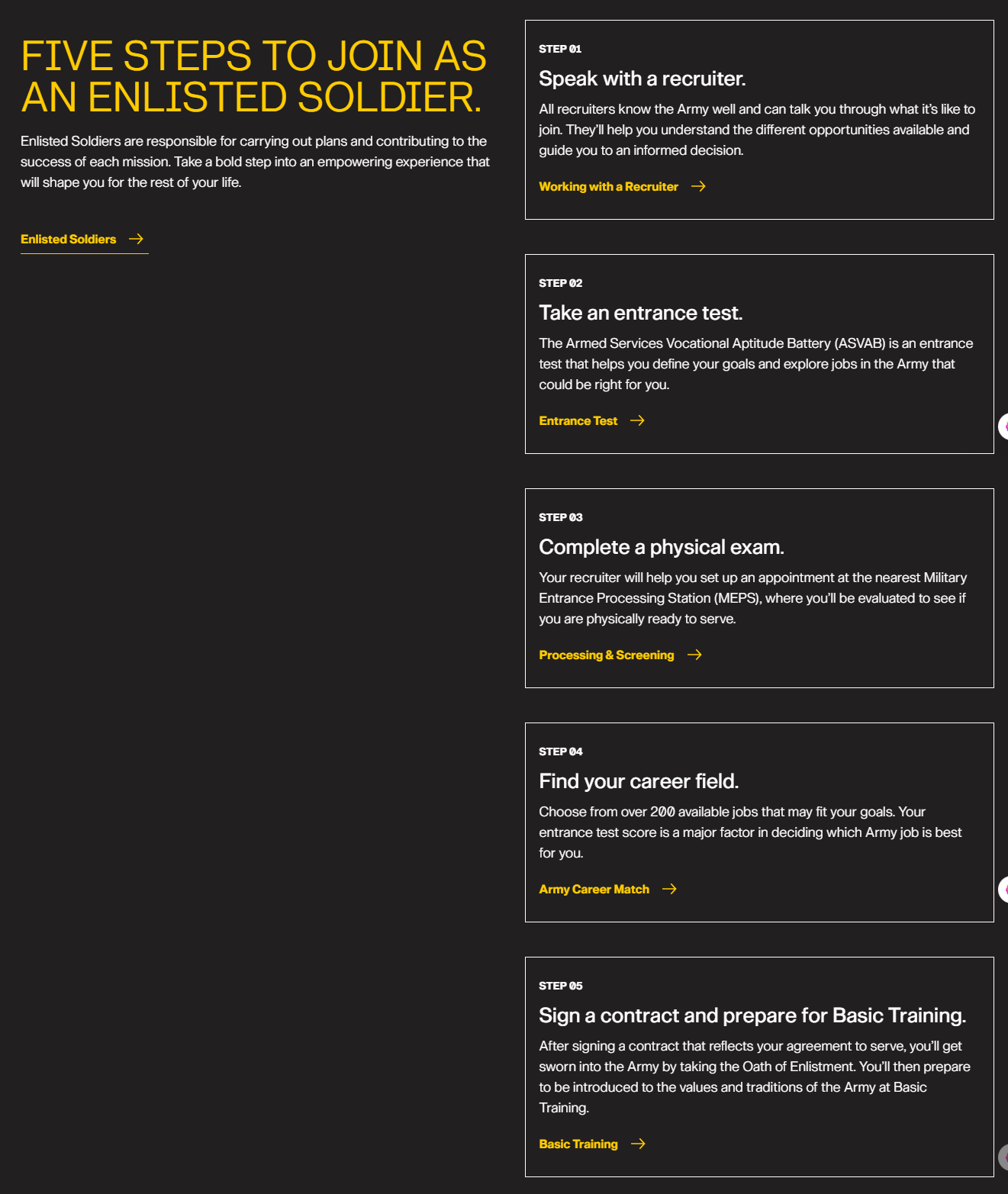
Go Army’s step-by-step guide is directed at prospective soldiers and includes everything they need to know about taking the first step toward becoming an enlisted soldier in the U.S. Army.
What makes it stand out?
- Uses a conversational approach to engage readers.
- It covers both preparation steps and mindset tips to help prospective soldiers prepare their minds.
- Features a brief overview and links to detailed information about each step.
Key takeaway: Uniformity in tone and style gives an interesting flow to step-by-step guides.
5. Account Set Up Guide by Coinbase
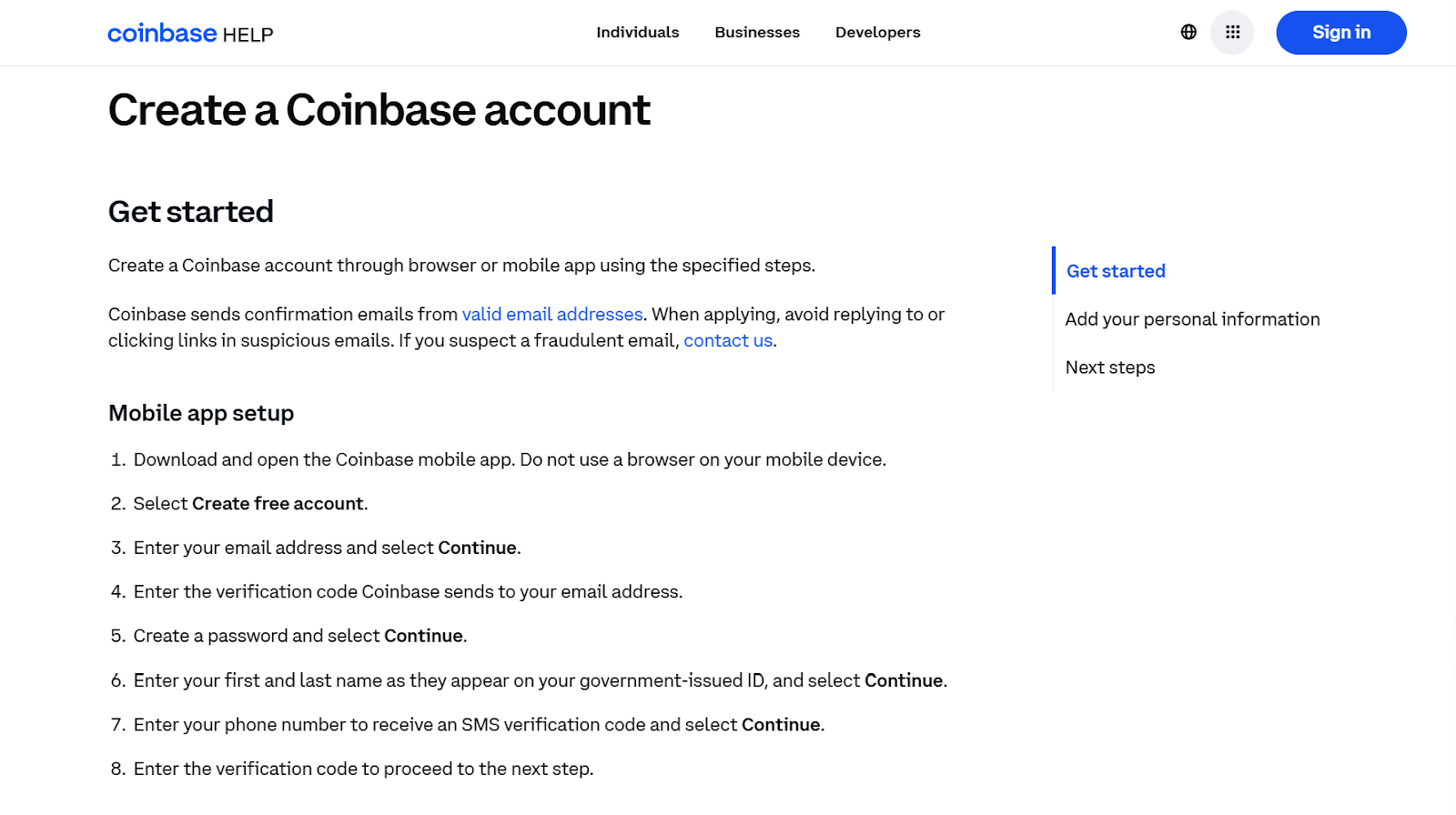
This step-by-step guide by Coinbase takes new users through the process of creating and setting up a new account.
What makes it stand out?
- Uses simple, beginner-friendly language to explain the signup steps.
- The instructions follow a chronological order, explaining the details on the signup page.
- Includes security tips to help users protect their accounts.
Key takeaway: Adapt your guide’s language to match the knowledge level of your audience.
The examples described above are a clear picture representation of step-by-step guides that appeal to the audience. Features like visual images, illustrations, tone, structure, and content organization are the things that make the step-by-step guides appealing.
SweetProcess helps businesses create structured, easy-to-follow guides with multimedia integration, collaboration tools, and real-time updates.
Start your free trial of SweetProcess today to build a practical step-by-step guide for your business.
Create and Manage Your Step-by-Step Guides in One Place
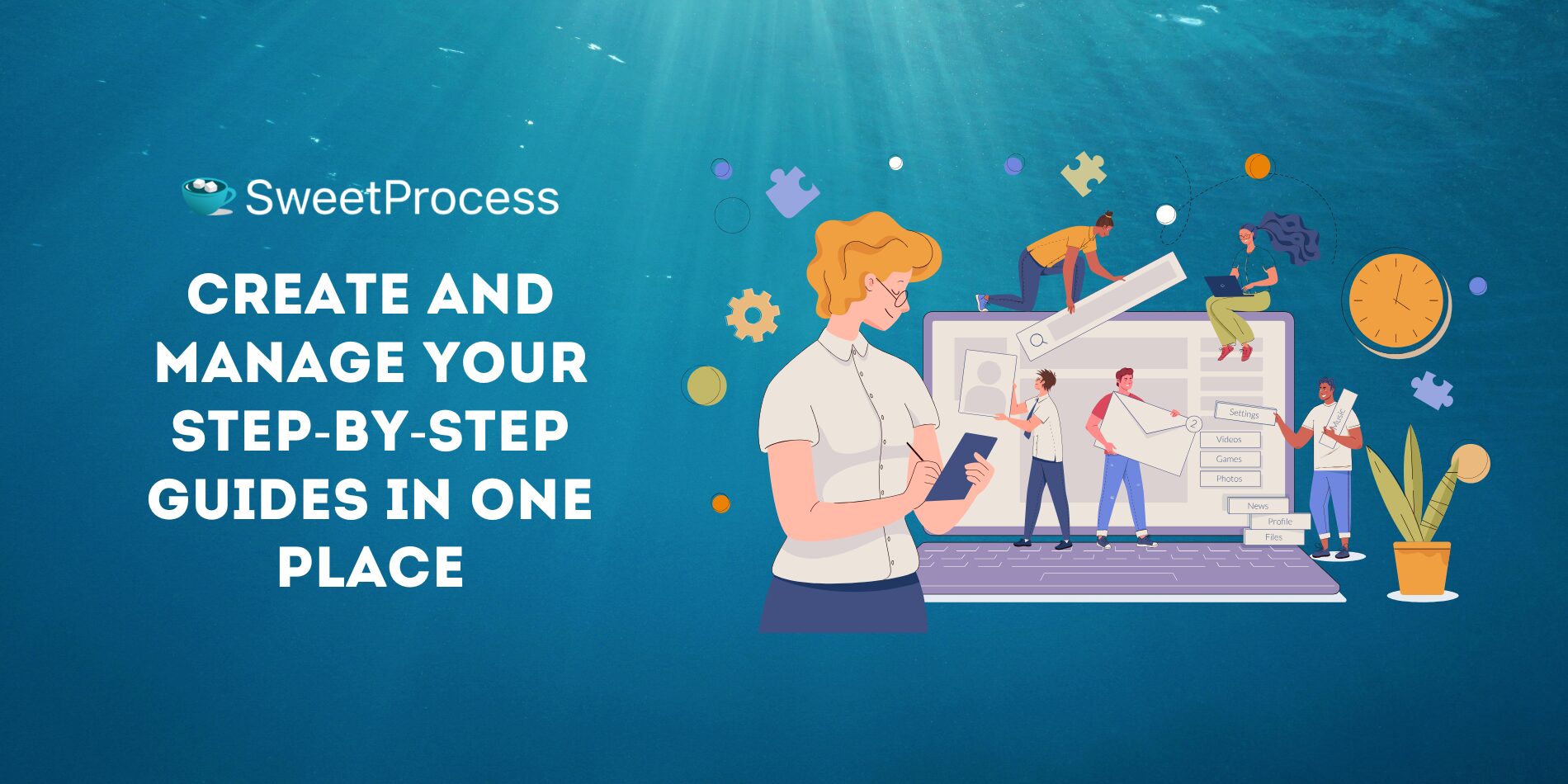
Like Trello’s Getting Started guide and Zoom’s step-by-step starters’ guide, step-by-step guides provide practical help for the audience to execute even complex processes quickly.
Such guides are essential for improving efficiency, reducing errors, and ensuring consistency in business operations. Whether onboarding new employees, training existing employees, assisting customers, or documenting internal processes, a well-structured guide makes tasks easier and more efficient.
However, managing multiple guides across different teams and platforms can be challenging. That’s where SweetProcess saves the day.
With a single SweetProcess account, you can document processes and procedures with text, images, and videos to give interactive appeal. You can also create teams in SweetProcess to edit, review, and update guides in real time for easy collaboration.
Apart from the text-based step-by-step documentation in SweetProcess, you can also capture on-screen instructions with the SweetProcess Chrome extension.
Are you ready to streamline your processes and create effective step-by-step guides? Create an account for free to access all the premium features.
